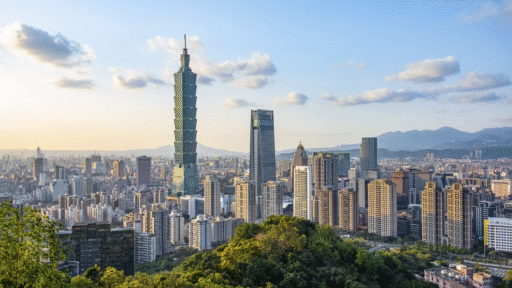8 August, 2023
The race is on to close the gaps in terrestrial IMT coverage: how does HIBS fit into this mission?


From direct-to-handset satellite communications to High Altitude Platform Stations as IMT Base Stations (HIBS), the race is on to complement terrestrial IMT coverage. How does HIBS fit into this mission, and is there sufficient radio spectrum for it to operate?
A promising solution to provide coverage in areas where existing terrestrial International Mobile Telecommuncations (IMT) coverage falls short is High Altitude Platforms as IMT Base Stations (HIBS). HIBS constitutes an IMT base station mounted onto an object at an altitude of 20-50 kilometres at a specified, nominal, fixed point relative to the Earth. HIBS can complement ground IMT coverage in rural areas, at sea, or in challenging terrains where ground infrastructure is not feasible. In addition, HIBS can also provide ad-hoc extra capacity wherever needed to take the load off existing terrestrial IMT networks. An example network topology for HIBS, alongside more traditional IMT macro and microcells, is shown below.
Figure 1 – Example topology for HIBS and macro and microcells.
The benefits of HIBS include a large coverage area, low latency, minimal ground infrastructure and maintenance, and retrospective compatibility with existing handsets. Despite these strengths, several challenges remain to realise HIBS’ full potential, one of the most critical being the availability of radio spectrum. Spectrum was already identified for HIBS at the World Radio Conference (WRC) 2000, and WRC-23[1] is considering several additional frequency bands for use by HIBS in frequency bands under 3 GHz. However, a number of incumbent services operate in these bands, as summarised in the image below[2], and may require protection from planned HIBS operations.


Figure 2 – Heatmap of the number of existing primary allocations across the bands (in MHz) under consideration through AI 1.4 of WRC-23.
As such, Agenda Item 1.4 at World Radio Conference 2023 (WRC-23) requires study into the potential compatibility of HIBS with these incumbent users. Positions of regional organisations will continue to develop in the run up to WRC-23, but any identification of more spectrum for HIBS will play a vital role in the development of HIBS technology to complement terrestrial IMT coverage in the coming years. While the technology promises (relatively) low-cost coverage expansion for existing terrestrial networks, the risk of interference impact on those networks must be avoided. The complex nature of the compatibility issue, as well as economic factors, highlight the need for caution and thorough consideration of the issue by affected administrations.
This report investigates some of the key strengths and challenges facing HIBS, the approaches proposed in response to the Agenda Item at WRC-23, and the developing positions of administrations and regional groups around the world.
Download “The race is on to close the gaps in terrestrial IMT coverage: how does HIBS fit into this mission?” in the link below:
[1] World Radio Conference (WRC) 2023, due to convene 20th Nov – 15th Dec 2023 in Dubai, UAE.
[2] Figure 2 shows a heatmap of the number of existing primary allocations (in any ITU Region) across the bands (in MHz) under consideration through AI 1.4 of WRC-23.



